Climate Ready Scotland: climate change adaptation programme 2019-2024
A five year programme to prepare Scotland for the challenges we will face as our climate continues to change.
Outcome 5: Our natural environment is valued, enjoyed, protected and enhanced and has increased resilience to climate change
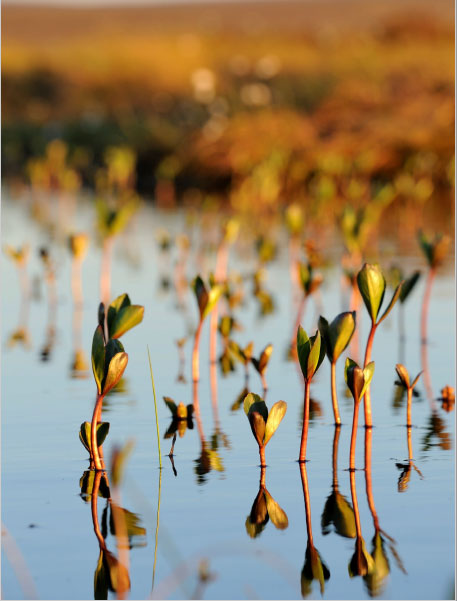
Image 5.1. Forsinard Flows Natural Nature Reserve (© Lorne Gill, SNH)
Introduction
Scotland’s natural environment is globally renowned. Many of our species and habitats are internationally important. Scotland's peatlands, mountain landscapes, coastal cliffs and seas, machair and diversity of woodland ecosystems are exceptional by European standards. They support a fantastic range of species, as well as being key assets for health and wellbeing. Unfortunately, our species and habitats are currently under threat, facing the twin challenges of climate change and biodiversity loss.
Where We Are Now
Scotland’s first Climate Change Adaptation Programme (SCCAP) had a strong focus on protecting Scotland's much loved natural environment. Adaptation has been firmly embedded within the core work of the wider public sector, including a long track record at Scottish Environment Protection Agency (SEPA), Scottish Natural Heritage (SNH), Scottish Forestry (SF), Historic Environment Scotland (HES) and Marine Scotland (MS).
SNH has developed a suite of eight Adaptation Principles which contribute to natural environment climate change adaptation work. SNH uses these principles in land management and advice improving understanding of the effects of climate change on species and habitats. The Principles complement our Sub-outcomes.
SNH Adaptation Principles – Helping Nature Adapt to Climate Change
1. Reduce other pressures on ecosystems, habitats and species – e.g. pollution, unsustainable use, grazing, habitat fragmentation and invasive non-native species.
2. Make space for natural processes including geomorphological, water and soil processes, and species interactions.
3. Enhance opportunities for species to disperse by reducing fragmentation and increasing the amount of habitat available.
4. Improve habitat management where activities such as grazing, burning or drainage cause declines in diversity or size of species populations, or where modifying management or increasing habitat diversity could improve resilience to climate change.
5. Enhance habitat diversity, e.g. by varying grazing or plant cutting management on grassland or moorland, or creating new habitats on farms.
6. Take an adaptive approach to land and conservation management e.g. by changing objectives and management measures in response to new information.
7. Plan for habitat change where assessments indicate losses of habitats or species are inevitable, for example as a result of sea-level rise.
8. Consider translocation of species in circumstances where assessments indicate the likely loss of a species despite new management measures, and where there are suitable areas for nature to adapt.
The following diagram outlines the structure of the natural environment chapter. It is set out by Sub-Outcome providing further detailed policies which follow an ecosystem services approach.
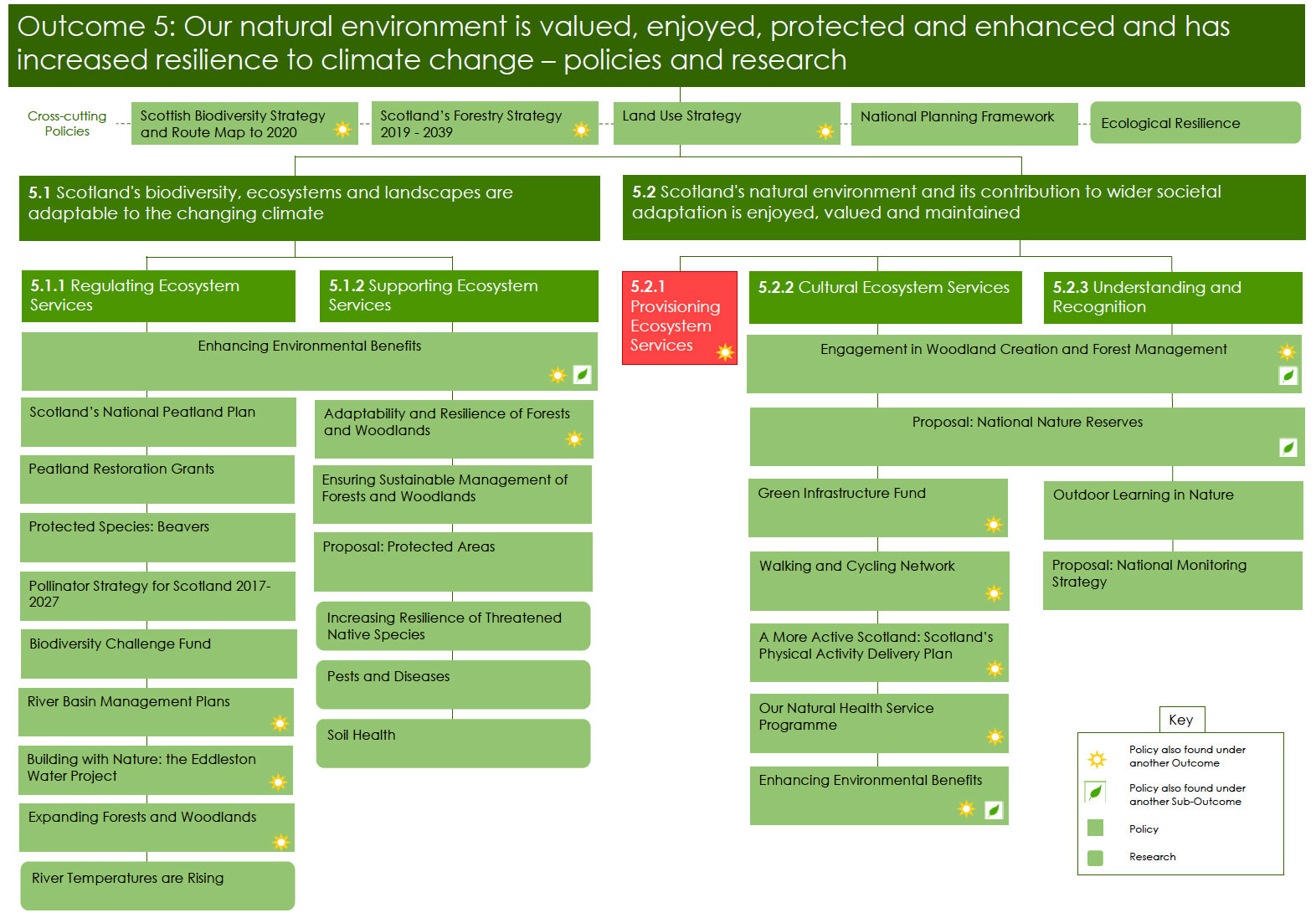
Natural Environment Sub-Outcomes
People derive a wide range of benefits from the natural environment. Ecosystem services are the direct and indirect contributions of ecosystems to human well-being. Ecosystem services are vital to society, the economy and the functioning of our natural systems. They are typically split into four categories: provisioning, regulating, supporting and cultural, as shown in Figure 5.1 below.
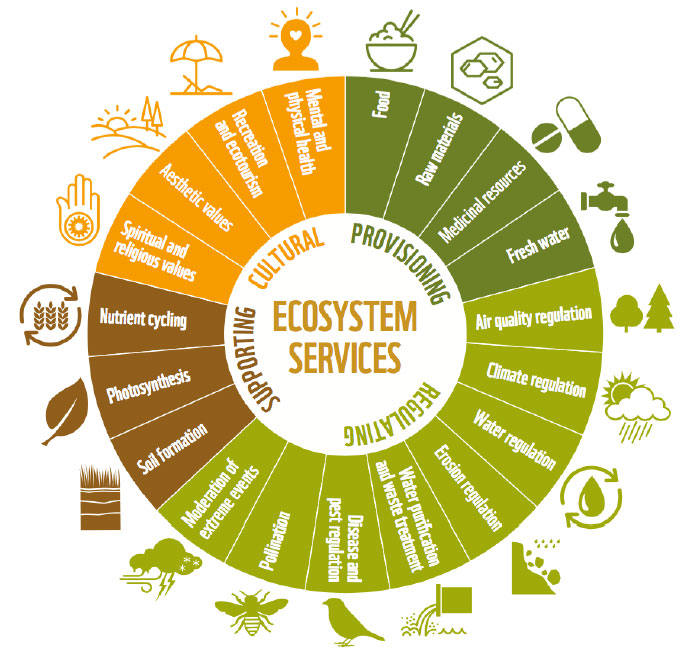
Image 5.2. Types of Ecosystem Services (© WWF)
Provisioning services are the products obtained from ecosystems. Regulating services are the benefits we obtain from the regulation of ecosystem processes. Cultural services are the nonmaterial benefits that people obtain from ecosystems, while supporting services are those that are necessary for the production of all other ecosystem services.
The intent of using an ecosystem services approach is to provide a framework for understanding and beginning to value all of the varied benefits that we receive from the natural environment, be it direct or indirect. When we have a better understanding of the value of nature, we are more likely to treat it with proper care. Additionally, ecosystem services allow us to see how the natural environment functions within wider systems and how important these systems are to our everyday lives.
Considering an ecosystem services approach, the four types of services have been split across three sub-outcomes. The regulating and supporting services are considered under Sub-Outcome 5.1; the cultural services are considered under Sub-Outcome 5.2, while the provisioning services are being considered under the economy outcome in Sub-Outcome 3.1.
Cross-Cutting Policies
The following policies relate to the whole of the Outcome. As they are higher level strategies and include many diverse policies and themes, they affect multiple Sub-Outcomes. Some of the key individual policies within these strategies have been drawn out further below.
| Scottish Biodiversity Strategy and Route Map to 2020 |
|
|---|---|
| The original strategy – Scotland’s Biodiversity: It’s in Your Hands – was published in 2004. In 2013, it was supplemented by the 2020 Challenge for Scotland’s Biodiversity. The two documents together now constitute the Scottish Biodiversity Strategy. Further focus is provided in the 2015 Route Map to 2020. The 2020 Challenge for Scotland’s Biodiversity sets out the major steps needed to improve the state of nature in Scotland. It aims to:
The main elements delivering adaptation include:
To further support this, SNH manage a challenge fund promoting practical conservation and partnership working across Scotland. |
|
| Timeline: To 2020 |
Owners: Scottish Government and SNH |
| Scotland’s Forestry Strategy 2019-2029 |
|
|---|---|
| Woodlands cover around 19% of land in Scotland (Forestry Statistics 2018) and deliver a wide range of benefits, including environmental benefits that contribute to improvements in our quality of life, including our air, biodiversity, water, soil, geological resources and land. Scotland’s Forestry Strategy presents the Scottish Government’s 50-year vision for Scotland’s forests and woodlands and sets out a 10-year framework for action. It has the principle of sustainable forest management at its core and recognises the need for better integration of forestry with other land uses and businesses, reinforcing the principle of ‘the right tree, in the right place, for the right purpose’. The Strategy supports the delivery of existing forestry commitments, such as the woodland creation and wood product use in construction targets expressed in the Climate Change Plan, and the native woodland and protected sites targets expressed in Scotland’s biodiversity: a route map to 2020. It aims to:
The Scottish Government will publish an implementation plan for the Forestry Strategy by April 2020 (one year after the Strategy was laid in Parliament). More information on this strategy can be found in Section 3.1.2. |
|
| Timeline: 2019-2029 |
Owners: Scottish Government (Scottish Forestry) |
| Land Use Strategy |
|---|
| The strategy will encourage the development of place based partnerships for delivering integrated and sustainable land use at a local, catchment or landscape scale. More detailed information on this strategy can be found in Section 3.1.1. |
| National Planning Framework |
|
|---|---|
| A ‘natural, resilient place’ is a core theme of Scotland’s long term vision for spatial development, set out in the National Planning Framework 3, published in 2014, and is supported by Scottish Planning Policy, published in 2014. The Planning (Scotland) Act 2019 is clear that the next National Planning Framework must be prepared with a view to contributing to six outcomes including securing positive effects for biodiversity. It must also be prepared with regard to a number of Scottish Government strategies including the Land Use Strategy. |
|
| Timeline: Ongoing |
Owners: Scottish Government |
Learning By Doing: Understanding and Managing for Ecological Resilience
Our natural environment is facing threats from a range of environmental drivers, including climate change, invasive non-native species, novel pests and diseases, over-exploitation, and pollution. It is difficult to predict exactly how nature will respond to these drivers and to tailor management solutions precisely to each threat. An alternative approach is to try to understand what makes species and ecosystems generally more resilient, and to develop management plans which aim to enhance resilience. The James Hutton Institute have been working along this pathway from trying to understand the underlying processes and properties that make ecosystems resilient, to exploring how this knowledge might be implemented in site management planning to help increase the resilience of our natural heritage, helping conserve nature despite the rapidly-changing environment in which we are currently living.
Research
Sub-Outcome 5.1: Scotland’s biodiversity, ecosystems and landscapes are adaptable to the changing climate
This Sub-Outcome relates to the policies that help with the adaptation of regulating and supporting ecosystem services. Helping nature to adapt will in turn provide us with benefits such as clean water, flood risk management, biodiversity and carbon storage. We must consider the resilience of wildlife, habitats and ecosystems to adapt to our changing climate. Building ecological resilience to address risks to species and habitats is one of the key recommendations of the Climate Change Risk Assessment 2017.
Cross-Cutting Policies
| Forestry Strategy: Enhancing Environmental Benefits |
|
|---|---|
| Scotland’s Forestry Strategy 2019-2029 identified six priority areas for action. These form the framework for Government and partnership working. One of the priority actions identified was: ‘Enhancing the environmental benefits provided by forests and woodlands’. This will be achieved (in part) by:
|
|
| Timeline: An implementation plan for the Forestry Strategy will be published by April 2020 |
Owners: Scottish Government (Scottish Forestry) |
5.1.1 Regulating Ecosystem Services
Regulating services are those that regulate ecosystem processes. These services include natural flood management, carbon sequestration, erosion control, pollination, water and air purification, and climate regulation. The following policies address the protection and support related to regulating services.
| Scotland’s National Peatland Plan |
|
|---|---|
| Scotland's National Peatland Plan, published in 2015, highlights how important peatlands are to Scotland. It proposes building on existing initiatives to secure their sustainable use, management and restoration. Only with wide support can we ensure that our peatlands are managed as a national asset that benefits society as a whole. The National Peatland Plan also sets out some proposals for research and for raising awareness. The National Peatland Group, chaired by SNH, promotes the plan and supports its implementation. |
|
| Timeline: Published in 2015 |
Owners: Scottish Government and SNH |
| Peatland Restoration Grants |
|
|---|---|
| Restoration helps peatland and its valuable biodiversity adapt to climate change. That in turn provides us with adaptation benefits including reducing flood risk and soil erosion, and improving water quality. We will support an increase in the annual rate of peatland restoration, from 10,000 hectares in 2017‑2018 to 20,000 hectares per year thereafter. We are providing grant funding to support eligible land managers to deliver peatland restoration. This will enable at least 20,000 hectares of peatland restoration per year from 2018‑19. Public sector action will be led by SNH through the Peatland Action initiative. In addition to providing support and advice, this will offer financial support to peatland restoration projects initiated by individual land managers. Experience from the Peatland Action Initiative to date demonstrates significant interest in restoration projects. |
|
| Timeline: Ongoing |
Owners: Scottish Government and SNH |
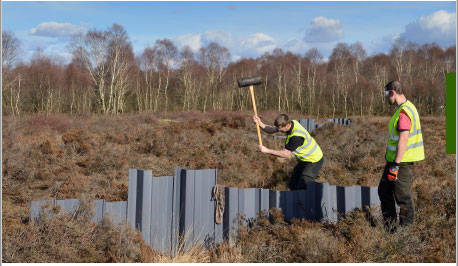
Image 5.3. Peatland Restoration, Flanders Moss National Nature Reserve (© Lorne Gill, SNH)
| Protected Species: Beavers |
|
|---|---|
| Beavers are protected by law as a European Protected Species. This protection came into force on 1st May 2019 with the view from the Scottish Government that the species should be allowed to expand its range naturally. This decision will see the return of a species that was part of our wildlife for thousands of years before becoming extinct here around the 16th century. Beavers benefit nature and could assist our ecosystems adapt to the changing climate. As ‘ecosystem engineers’ their activities can create wetland habitats, improve habitat structure and diversity and enhancing biodiversity. They can also alleviate flooding, improve water quality and bring socio-economic benefits. A Management Framework for Beavers in Scotland has been published on the Scottish Natural Heritage website. |
|
| Timeline: Ongoing |
Owners: Scottish Government, SNH |
| Pollinator Strategy for Scotland 2017-2027 |
|
|---|---|
| The Pollinator Strategy sets out how Scotland can continue to be a place where pollinators thrive, along with actions that are needed to help achieve that objective. It encourages the use and development of wildflower meadows, living walls, green roofs and bee hotels, as well as projects which tackle habitat fragmentation and increase ‘stepping stone’ opportunities for pollinators. Resilient populations of pollinators will greatly help our nature and agriculture adapt to climate change. |
|
| Timeline: 2017-2027 |
Owners: SNH |
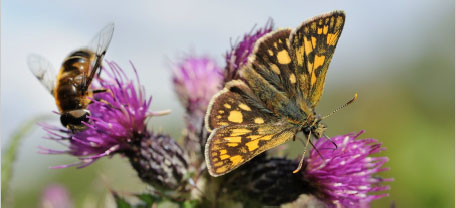
Image 5.4. Glasdrum National Nature Reserve (© Lorne Gill, SNH)
| Biodiversity Challenge Fund |
|
|---|---|
| Announced in the 2018-19 Programme for Government, funding of around £1.8 million has been offered to 14 projects that will help Scotland meet its Aichi targets on reducing habitat loss, tackling invasive species, helping ecosystems vulnerable to climate change, and supporting sustainable agriculture, aquaculture and forestry. |
|
| Timeline: Up to £1 million of investment available for 2019-20 |
Owners: SNH |
| River Basin Management Plans |
|
|---|---|
| River Basin Management Plans detail Scotland’s objectives and action programmes for protecting and improving the water environment. There are two River Basin Management Plans: one covering the Scotland River Basin District; and the other cross border for the Solway Tweed River Basin District. Climate change will increasingly affect demands on water resources, the ability of the water environment to accommodate water use, the pattern of land use and the ability of non-native species to spread. As part of Scotland’s river basin planning work over the period to 2027, work will be undertaken to improve understanding of when and where there will need to be action to manage these effects. Climate change thinking is integrated into any improvement measures that are used to address pressure on the water environment in each river basin district. Each improvement measure is considered through the lens of preparing Scotland for a future climate, and how effective the measure will be under a changed climate. This combines the potential impacts of an action on flood risk, drought and ecosystem services while also considering whether the action will need to be adapted for a future climate. More information on Scotland’s River Basin Management Plans can be found here. |
|
| Timeline: 12-year period covering objectives for 2015-2027 |
Owners: Scottish Government, SEPA, Scottish Water |
| Building with Nature: the Eddleston Water Project |
|
|---|---|
| Building with Nature is an EU Interreg project to gather evidence to support working with natural processes to manage flood risk and coastal erosion, whilst enhancing ecosystem services. The Eddleston Water project, which is managed by the Tweed Forum, is one of the catchment projects monitoring the impacts of wetlands, woodlands, ponds and leaky barriers on flood risk in the catchment and downstream to Peebles. The Eddleston Water project aims to assess the benefits of working with natural processes across a catchment to help manage flood risk and improve the status of the river. An extensive monitoring network has been set up to collect evidence to support the use of measures such as woodland planting and floodplain reconnection for flood management. More information on this policy can be found in Section 7.2. |
|
| Timeline: To June 2020 |
Owners: Scottish Government, Tweed Forum, SEPA |
| Forestry Strategy: Expanding the Area of Forests and Woodlands |
|
|---|---|
| Scotland’s Forestry Strategy 2019-2029 identified six priority areas for action over the following ten years. These priority areas form the framework for co-ordination of Government and partnership working. One of the priority actions identified was: ‘Expanding the area of forests and woodlands, recognising wider land-use objectives’. This priority will help deliver the forestry targets set out in The Climate Change Plan to increase woodland cover to 21% of the total area of Scotland by 2032, using a stepped increase in woodland creation to 15,000 hectares from 2024-25. In doing so, we will help to grow Scotland’s carbon sink and reduce greenhouse gas emissions. |
|
| Timeline: An implementation plan for the Forestry Strategy will be published by April 2020 |
Owners: Scottish Government (Scottish Forestry) |
River Temperatures are Rising
Sustaining cool river temperatures in Scotland is essential for salmonid habitat and health. It is also critical for sport fishing (contributing around £113 million per year to the Scottish rural economy) and whisky production. Long-term monitoring in the River Spey identified a 2 degree increase in the river temperature over the past 105 years. This could mainly be explained by increasing air temperature and less snow melt. This will inform action to make rivers more resilient to future change through the implementation of adaptation measures at a catchment scale. Practical guidance in the form of a factsheet and short film were produced to raise awareness and inform policy and practice.
Research
5.1.2 Supporting Ecosystem Services
Supporting services describes those which are necessary for the production of all other services. They differ from other services as their impacts tend to be more indirect to humans or occur over a long period of time. Some examples of supporting services are nutrient cycling, photosynthesis, soil formation, habitat provision and biodiversity. Helping these services to adapt, in turn helps to ensure the adaptation of the other types of ecosystem services.
| Forestry Strategy: Adaptability and Resilience of Forests and Woodlands |
|
|---|---|
| Scotland’s Forestry Strategy 2019-2029 identified six priority areas for action over the following ten years. These priority areas form the framework for co-ordination of Government and partnership working. One of the priority actions identified was: ‘Increasing the adaptability and resilience of forests and woodlands’. This priority recognises the importance of safeguarding the ability of Scotland’s forests and woodlands to provide a wide range of benefits to current and future generations. Given the degree of uncertainty about future environmental, ecological, economic and social conditions, relative to the lifespan of Scotland’s trees, the Government’s approach will be to support and enable improvements to the adaptability and resilience of Scotland’s forests and woodlands. This will be achieved by:
|
|
| Timeline: An implementation plan for the Forestry Strategy will be published by April 2020 |
Owners: Scottish Government (Scottish Forestry) |
| Forestry Strategy: Ensuring Sustainable Management of Forests and Woodlands |
|
|---|---|
| Scotland’s Forestry Strategy 2019-2029 identified six priority areas for action over the following ten years. These priority areas form the framework for co-ordination of Government and partnership working. One of the priority actions identified was: ‘Ensuring forests and woodlands are sustainably managed. As a cornerstone of activity under the Forestry and Land Management (Scotland) Act (2018), Scottish Government will maintain and enhance Scotland’s forest and woodland resources for the benefit of current and future generations. This will be achieved by:
|
|
| Timeline: An implementation plan for the Forestry Strategy will be published by April 2020 |
Owners: Scottish Government (Scottish Forestry) |
| Proposal: Protected Areas |
|
|---|---|
| Protected Areas will promote an ecological network approach and improved health of protected sites through collaboration. This will improve the resilience of species and habitats in protected sites, as well as wider populations and ecosystems to climate change and related pressures. |
|
| Timeline: Ongoing |
Owners: SNH |
Case Study 6: Cairngorms Connect
Cairngorms Connect is a partnership of neighbouring land managers, committed to a bold and ambitious 200-year vision to enhance habitats, species and ecological processes by working together across a vast area of the Cairngorms National Park.
Large Scale Habitats
The effects of climate change will be most significant where habitats such as forests or peatlands are small. Where habitats are extensive - as in the Cairngorms Connect area - the impact of individual incidents of fire, flood, disease, and wind-throw of trees is less than in smaller areas of forest or peatland.
Woodland Management
Increasing the biodiversity and health of our native woodland will increase its resilience to the changing climate. Through managing herbivore impacts, eradication of non-native trees and shrubs where appropriate and planting of tree species that have been lost from our native woods the partnership will improve pinewood biodiversity and ecosystem health.
Woodland Expansion to its Natural Limit
Climate change may make parts of our forests unsuitable for some species. By extending forests higher up the hills, we can create new or alternative ‘niches’, providing homes for wildlife displaced by climate change. In expanding forests we also increase water uptake and because trees create a ‘rougher’ catchment, slow the water flow.
Peatland Restoration
As well as being an important way of capturing and storing atmospheric carbon, functioning blanket bogs play an important role in holding water high in the catchment. Eroded blanket bog has deep channels through which water rushes into rivers, contributing to flood risk. Restored bog has pools and Sphagnum mosses that hold water, and intact peat functions as a huge sponge to hold water. All of this helps to slow movement of water into the lower catchment, reducing flood risk.
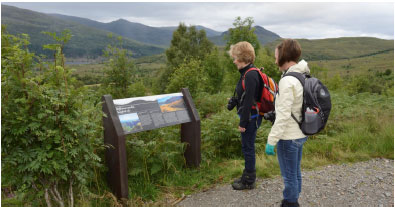
Image 5.5. Creag Meagidh National Nature Reserve (© Lorne Gill, SNH)
Case Study 7: Building a Fire Resilient Landscape
Climate Change is having a significant effect on the number, size and duration of wildfires in Scotland. We are seeing more extreme fire behaviour and have had a steady increase in the number of wildfires and area of ground burned. The combination of longer warmer summers, colder drier winters and an increased fuel load is providing a challenging set of circumstances. In 2018 Scotland had the largest area burned due to wildfire anywhere in Europe, and already in 2019 the UK has had more wildfires over 25 hectares than the total in 2018, with 17000 hectares burned so far (18000 hectares in 2018). (European Forest Fire Information System)
The Scottish Fire and Rescue Service has contributed to the recent review of the Muirburn Code and supports the safe and planned use of Muirburn by Land Managers to control the fuel loads on Scotland’s hills and moorland. We also recognise that there are other land management techniques that do not use burning, such as cutting, re-wetting peatbog areas, and using grazing to control the fuel, and while they may not be as effective at reducing the availability and quantity of fuel they are valid and appropriate.
Controlling the fuel loading on the hillsides is essential to ensure that uncontrolled wildfires do not continue to destroy huge areas of land. Muirburn does just this and has been used for centuries in Scotland as a land management technique. The techniques used by Land Managers to carry out Muirburn can also be used during wildfires to control the size and direction of the fires, and as a tool to reduce the number of firefighters required to extinguish the blaze.
By working with Land Managers during the Muirburn season there are opportunities to use prescribed burning to create tactically located firebreaks and protection for vulnerable areas such as windfarms and water catchment areas as well as sites of Special Scientific or Historical Interest. This technique is used extensively in other parts of the World by Fire Services and Land Managers as a preventative measure against the risk of Wildfires. By controlling the fuel in such a way it is possible to reduce the intensity of wildfires which occur, and provide safe areas that firefighting operations can be mounted from.
Building a fire resilient landscape is a key theme in both the international Wildfire community, and in the work being encouraged by the Scottish Wildfire Forum. Land Managers should be encouraged to carry out fire risk assessments for the estate/forest they are responsible for and make provision in the form of fire breaks, access points, availability of water supplies and suitable training. All of these measures are becoming more important as the climate changes and our wildfire season expands as a result.
SFRS is developing a strategy which will ensure that it has the right resources in the right place at the right time to fight wildfires.
Increasing the Resilience of Threatened Native Species
The distribution of many of Scotland’s native species has been reduced over time through multiple pressures, including over-grazing, the effect of invasive species and air pollution. Research has shown how species in small and isolated populations will be less able to cope with climate change because of lower genetic diversity and reduced fitness. To increase species resilience, and to help deliver Scotland’s Biodiversity Strategy, we have carried out experimental translocations – such as for the Schedule 8 plant ‘alpine blue sow-thistle’ in the Cairngorms National Park, and the temperate rainforest lichen ‘lungwort’ in the Loch Lomond and Trossachs National Park. These experiments provide robust evidence for translocation best practice, contributing to landscape-scale initiatives including delivery of the Cairngorms Nature Action Plan and the Atlantic Woodland Alliance Strategy.
Research
Pests and Diseases
Numerous pests continue to threaten our borders. While some may thrive in our climate, others will be limited. Having identified the main threats, including Xylella fastidiosa and Ips typographus, research is now developing tools to model the future spread, survival and infection rates of such threats, working with international partners who may already have the pest or disease and the associated outbreak data. Through national mapping of the plant hosts and vector species associated with these threats, it will be possible to better understand their potential distribution under different climate scenarios, and this information can be included in the Scottish Biodiversity Strategy. To complement this, an online plant health resource tool for the natural environment has been developed, which includes information on the likelihood of threats to Scotland and the role of climate on these threats.
Research
Soil Health
Soils are severely impacted by climate change but there is currently insufficient data and metrics to assess their vulnerability to climate change. This has been raised in both Independent Assessments of the first SCCAP carried out by the Committee on Climate Change. Building on a recent report by CXC for the Scottish Government on the institutional governance for soil in Scotland, a new research project will look across the metrics and policy issues to establish a framework for soil health.
Future Research
Sub-Outcome 5.2: Scotland’s natural environment and its contribution to wider societal adaptation is enjoyed, valued and maintained.
Helping our natural environment adapt also helps sustain us in many less tangible ways. Our natural environment contributes to our health and wellbeing, enjoyment of the outdoors, sense of place and who we are as a nation. The policies under this Sub-Outcome help to ensure that the contributions of the natural environment to culture are understood, enjoyed and maintained.
5.2.1 Provisioning Ecosystem Services
Provisioning services are the products that are obtained from ecosystems, such as: food, timber, fresh water, medicinal resources and raw materials. They are tied to the concept of natural capital which is a country’s stock of natural resources and environmental assets including plants, animals, air, water, soils and minerals. Scotland’s natural capital is a source of significant international competitive advantage, and its continuing health and improvement is fundamental to sustainable economic growth. These services are considered in Sub-Outcome 3.1.
5.2.2 Cultural Ecosystem Services
Cultural services are the more intangible benefits that people receive from ecosystems. They include mental and physical health and well-being, recreation, tourism, aesthetic values, spiritual and religious values, cultural heritage and sense of place. The policies in this section connect people better with the natural environment that surrounds them, and in doing so, help them receive the most benefits from the cultural ecosystem services. By connecting more to the natural environment, we are more likely to protect it, and therefore, support the ability of the natural environment to adapt to climate change.
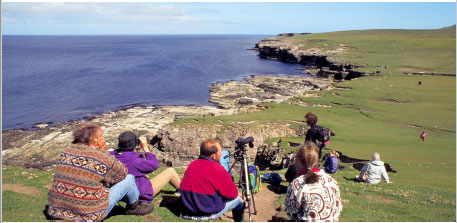
Image 5.6. Noss National Nature Reserve (© Lorne Gill, SNH)
| Forestry Strategy: Engagement in Woodland Creation and Forest Management |
|
|---|---|
| Scotland’s Forestry Strategy 2019-2029 identified six priority areas for action over the following ten years. These priority areas form the framework for co-ordination of Government and partnership working. One of the priority actions identified was: ‘Engaging more people, communities and businesses in the creation, management and use of forests and woodlands’. This will be achieved (in part) by:
|
|
| Timeline: An implementation plan for the Forestry Strategy will be published by April 2020. |
Owners: Scottish Government (Forestry Scotland) |
| Green Infrastructure Fund |
|---|
| The green infrastructure fund aims to improve Scotland’s urban environment by increasing and enhancing greenspace in our towns and cities, especially close to areas of multiple deprivation. More information on this fund is included in Section 1.2.1.1. |
| Walking and Cycling Networks |
|
|---|---|
| This network will close key gaps, upgrade connecting routes, link to public transport and promote shared use of paths to encourage active travel and enjoyment of Scotland’s natural landscapes. Stronger walking and cycling networks diversify the transport system, providing additional options for travel in the event of weather related disruption. Changes to Scotland’s climate may support this programme as leisure and other outdoor activities may be taken up by people as the climate warms, and active travel and recreation become more accessible. The Strategic Transport Projects Review will include the National Walking and Cycling Network, the National Cycle Network, and other strategic walking and cycling networks on local and trunk roads. |
|
| Timeline: Consider a further phase of work as part of the review of the National Planning Framework. |
Owners: Transport Scotland, SNH, Sustrans and Scottish Canals |
| A More Active Scotland: Scotland’s Physical Activity Delivery Plan |
|---|
| The Physical Activity Delivery Plan sets out actions to encourage and support people in Scotland to be more active, more often. More information on this policy can be found in Section 2.2.2.1. |
| Our Natural Health Service Programme |
|---|
| The Natural Health Service supports the health sector to embrace green exercise as part of policy and practice. This will see nature-based health programmes used as part of health promotion and improvement, and encourage healthier lifestyle behaviours. More information on this policy can be found in Section 2.2.2.1. |
| Forestry Strategy: Enhancing Environmental Benefits |
|---|
| Scotland’s Forestry Strategy 2019-2029 identified six priority areas for action. These form the framework for Government and partnership working. One of the priority actions identified was: ‘Enhancing the environmental benefits provided by forests and woodlands’. More information on this policy can be found in Section 5.1.1. |
| Proposal: National Nature Reserves |
|
|---|---|
| The application of a natural capital approach on SNH reserves aims to better communicate the socio-economic values of nature, including its role in supporting climate change adaptation. SNH uses their National Nature Reserves to test, refine and demonstrate climate change adaptation in practice, monitoring their work to understand which adaptation methods work best in different situations. Specific areas of adaptation work include:
More information about these areas of adaptation work can be found here. |
|
| Timeline: 2019: complete a pilot application of a natural capital approach on SNH reserves. 2020: complete an audit of all National Nature Reserve management plans to identify potential for enhanced and new contributions to adaptation. |
Owners: SNH (other National Nature Reserve Partnership bodies could be involved) |
Case Study 8: Considering Translocation
Learning Lessons from Lichens at Creag Meagaidh National Nature Reserve
As our climate changes, species are moving in order to track their preferred conditions. Species’ ranges are often climate-influenced and have tracked previous climatic fluctuations in the past. However, the current rate of climate change combined with habitat fragmentation in many locations means there is a gap between the necessary rate of range shifting and the actual ability of species to move. As a result, many species may become stranded, as they are unable to relocate and may eventually be lost.
A five year project is underway at Creag Meagaidh National Nature Reserve to test the feasibility of physically moving some samples of the lichen species Flavocetraria nivalis from the high Cairngorms into Creag Meagaidh. Although the Creag Meagaidh sits outside the lichen’s climatic range, this project aims to find pockets of suitable habitat, while also highlighting the risks associated with this climate change adaptation measure, known as ‘assisted colonisation’.
5.2.3 Understanding and Recognition
Using an ecosystem services approach provides a framework for understanding and recognising the value of all the benefits we receive from the natural environment. We are more likely to care for nature if we have a good understanding of its value. More than just understanding the value of nature, it is also important that we understand our connection to it. As humans, we are also part of ecosystems. We are not separate from nature but part of it. Related to this, it is important that we also recognise the intrinsic value of nature. Our natural systems are valuable not just because of their connection to us as humans, but for its own sake as well. The policies under this sub-outcome help to build our understanding and recognition of the natural environment.
| Forestry Strategy: Engagement in Woodland Creation and Forest Management |
|---|
| Scotland’s Forestry Strategy 2019-2029 identified six priority areas for action over the following ten years. These priority areas form the framework for co-ordination of Government and partnership working. One of the priority actions identified was: ‘Engaging more people, communities and businesses in the creation, management and use of forests and woodlands’. More information on this policy can be found in Section 5.2.2. |
| Outdoor Learning in Nature |
|
|---|---|
| Learning in Greenspace is working with 100 schools serving disadvantaged communities to improve local greenspace for regular outdoor learning and play. The Teaching in Nature programme will enable teachers to take teaching outdoors. Learning outdoors has been shown to increase attainment, improve physical health, social interactions, develop risk taking skills and supports emotional wellbeing. Spending time in nature increases an understanding of its relevance and can help embed a life-long commitment to its care. |
|
| Timeline: To 2024, 100 greenspaces to be improved and regularly used for outdoor learning and play. |
Owners: SNH, Local Authorities |
| Proposal: National Monitoring Strategy |
|
|---|---|
| Supporting long term initiatives that encourage citizen science and their use in helping to detect and increase awareness of the effects of climate change on the natural environment. This information is important in supporting decisions on adaptive management. |
|
| Timeline: Ongoing |
Owners: SNH |
| Proposal: National Nature Reserves |
|---|
| The application of a natural capital approach on SNH reserves aims to better communicate the socio-economic values of nature, including its role in supporting climate change adaptation. More information on this proposal can be found in Section 5.2.2. |
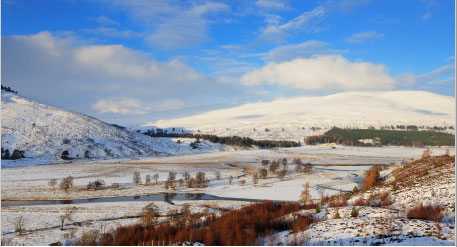
Image 5.7. Mar Lodge Estate National Nature Reserve (© Lorne Gill, SNH)
Adaptation Behaviours
The adaptation behaviours outlined below help individuals and organisations to adapt to a changing climate. They also provide opportunities to provide climate adaptation functions. Actions to create and improve greenspace act at both individual and organisational levels. They increase opportunities for people to engage with nature as well as producing multiple environmental benefits.
Individual Behaviours
1. Individuals are encouraged to check the weather forecast regularly and be prepared. For example, by having plenty of water and seeking shade on hotter days.
2. Increasing or maintaining greenspace can have benefits for adaptation. Greenspace increases surface water drainage, and encourages pollinators like bees. The Royal Horticultural Society (RHS) has created a document with advice on how to garden in a changing climate.
Societal Behaviours
1. Increasing greenspace. Organisations or businesses with access to outdoor space could consider converting it to greenspace by planting trees and wildflowers. Creating greenspace has many co-benefits including flood management and improvements in staff health and wellbeing.
2. Employee volunteering opportunities. Businesses could consider encouraging employees to take part in natural environment based volunteering. The Scottish Government fund Volunteer Scotland, a digital gateway for anyone looking for volunteering opportunities.
Monitoring and Evaluation: Outcome 5
Monitoring and Evaluation is integral to the outcomes-based approach which encourages consideration at all stages of adaptation policy development. Further information including a general introduction to the framework, and a description of the foundation and principles can be found in the monitoring and evaluation introduction and Annex 3 respectively.
Key sources of existing monitoring evidence for Outcome 5 include: Ecosystem Health Indicators, Scottish Biodiversity Indicators, Climate Change Plan indicators, and SEPA. There is currently limited data available for some themes, but by identifying what we need to measure not just what we know we can, the framework highlights monitoring gaps which will be filled as more data and associated monitoring arrangements are developed.
Monitoring the Adaptation Process (‘What are we doing?’) The themes set out the structure to monitor the implementation of and output from adaptation policies and actions which support the Outcome. Indicators will include metrics of, for example: usage levels of decision-support tools, habitat restoration, and sustainable resource management.
Monitoring the Sub-Outcomes (‘Is it working?’) The Sub-Outcome monitoring themes highlight the key components of each Sub-Outcome and provide the structure for evaluating progress. Indicators will include metrics of, for example: extent and condition of key habitats, biodiversity, and soil health.
Monitoring the Outcome Monitoring at this high level will directly link the Outcome to wider government policy and the National Performance Framework by utilising relevant indicators already associated with these high-level monitoring frameworks.
| National Performance Framework Indicators |
Sustainable Development Goals Indicators |
|---|---|
|
|
| Aichi Target indicators |
|
|
Monitoring and Evaluation Structure: Outcome 5
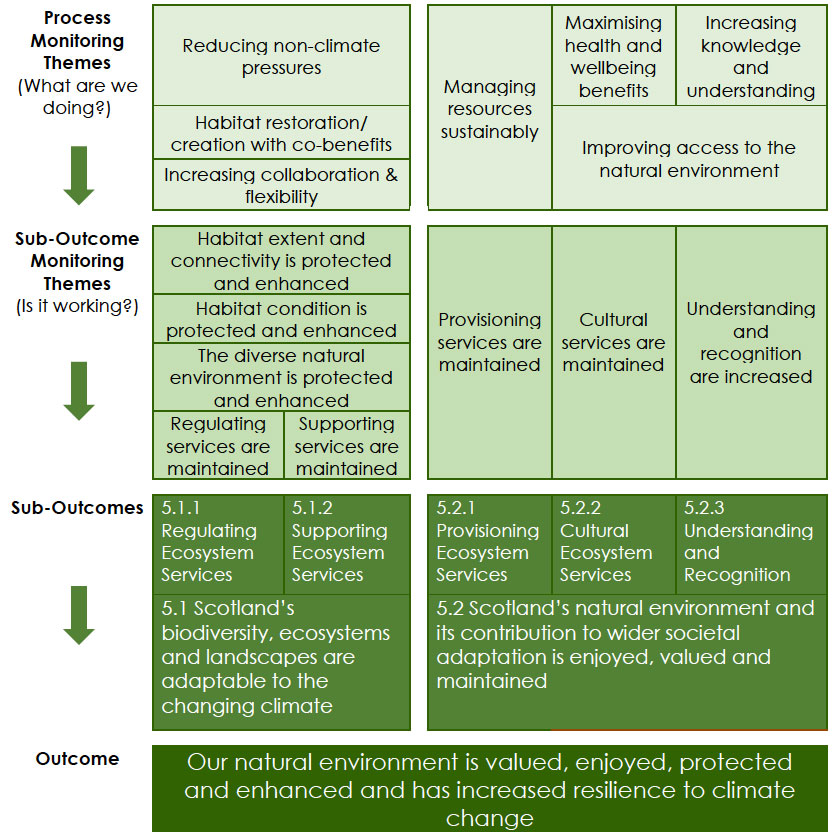
UK Climate Change Risk Assessment: Associated Risks
The UK Climate Change Risk Assessment risks that will be addressed by the policies presented in Outcome 5 are set out below:
| Ne1: |
Ne2: |
Ne4: |
Ne5: |
Ne6: |
| Ne7: |
Ne9: |
Ne10: |
Ne14: |
PB3: |
Contact
Email: roddy.maclean@gov.scot
There is a problem
Thanks for your feedback